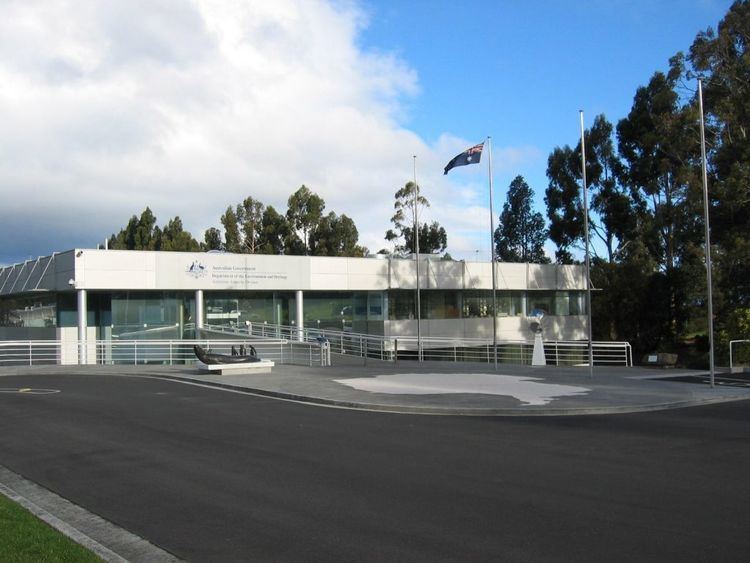 | ||
Australian antarctic division casey station
The Australian Antarctic Division (AAD) is a division of the Department of the Environment. The Division undertakes science programs and research projects to contribute to an understanding of Antarctica and the Southern Ocean. It conducts and supports collaborative research programs with other Australian and international organisations, such as the Bureau of Meteorology and Geoscience Australia, as well as administering and maintaining a presence in Australian Antarctic and sub-Antarctic territories.
Contents
- Australian antarctic division casey station
- Icebreaker for the australian antarctic division by knud e hansen
- Charter
- Australian Antarctic program
- Research stations
- Aviation
- Shipping
- Territorial administration
- References

Their website includes articles on the Antarctic wildlife, threats, guidelines and they have blogs written by Australians at the three Australian bases in Antarctica: Mawson, Davis and Casey.

Icebreaker for the australian antarctic division by knud e hansen
Charter
Under its charter the Australian Antarctic Division:

Australian Antarctic program
The Australian Antarctic Division leads the Australian Antarctic program (AAp) with four key goals:

Research stations
The AAD headquarters is based in Kingston, Tasmania, just south of Hobart. The division's headquarters houses laboratories for science, electronics and electron microscopy, mechanical and instrument workshops, a krill research aquarium, a herbarium, equipment stores, communications and other operational and support facilities. The Chief Scientist since 2016 has been Dr Gwen Fenton.
The AAD maintains three permanently manned stations on the Antarctic continent, and one on Macquarie Island in the subantarctic:
Remote field bases operate during the summer research season supporting coastal, inland and traverse operations.
Aviation
The AAD utilises an air transport system, both for transport to and from Antarctica, and for transport within the continent. Aircraft for this system are provided and operated under contract by private sector operators. Services to and from Antarctica are provided, between November and February each year, by an Airbus A319-115LR operated by Skytraders. This aircraft operates to and from the Wilkins ice runway, situated some 65 kilometres (40 mi) from Casey Station.
Services within Antarctica are provided by a mixture of fixed-wing aircraft and helicopters. Fixed-wing services are provided by a pair of CASA 212-400 aircraft, equipped with skis, that are also operated by Skytraders. These aircraft operate from Wilkins runway and from smaller snow runways at each of the three permanent stations, as well as any field locations which provide the necessary flat area of snow or ice. Helicopter services are provided by three Eurocopter AS 350 BA Squirrel helicopters, operated by Helicopter Resources.
The Antarctic Flight RAAF operated from 1948 to 1963. Since its withdrawal, aircraft from the Royal Australian Air Force operated infrequently in the Antarctic and sub-Antarctic islands in the 1970s and 1980s, and more recently in late 2015.
Shipping
The AAD uses the icebreaker RSV Aurora Australis, a multi-purpose marine research and resupply ship chartered from P&O Polar. The Aurora Australis was launched in 1989 and built by Carrington Slipways in Newcastle, New South Wales. In late October 2015 the Australian government announced a plan to acquire a new ice-breaker to replace Aurora Australis by 2019.
Territorial administration
The AAD is responsible, on behalf of the Australian Government, for administering the two Australian federal territories that lie in Antarctic or sub-Antarctic latitudes:
Although the AAD maintains a base on Macquarie Island, that island is not a federal territory but is rather part of the Australian state of Tasmania.
